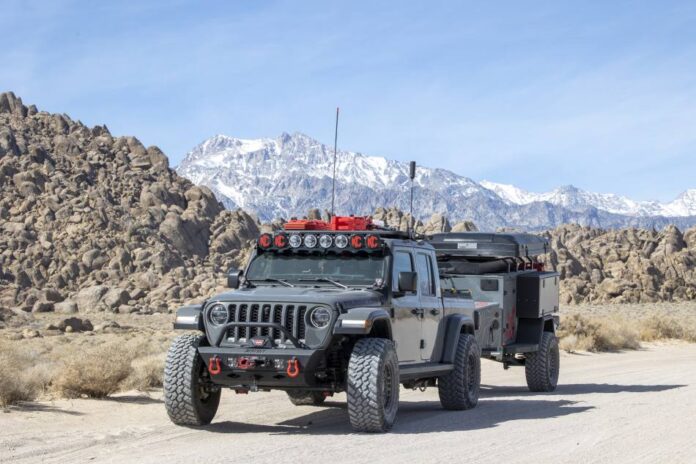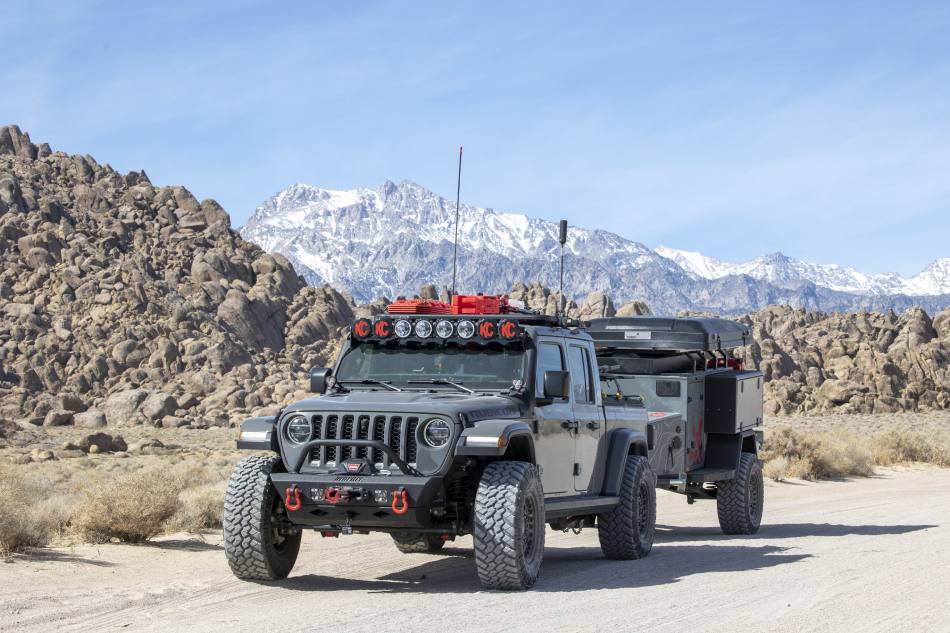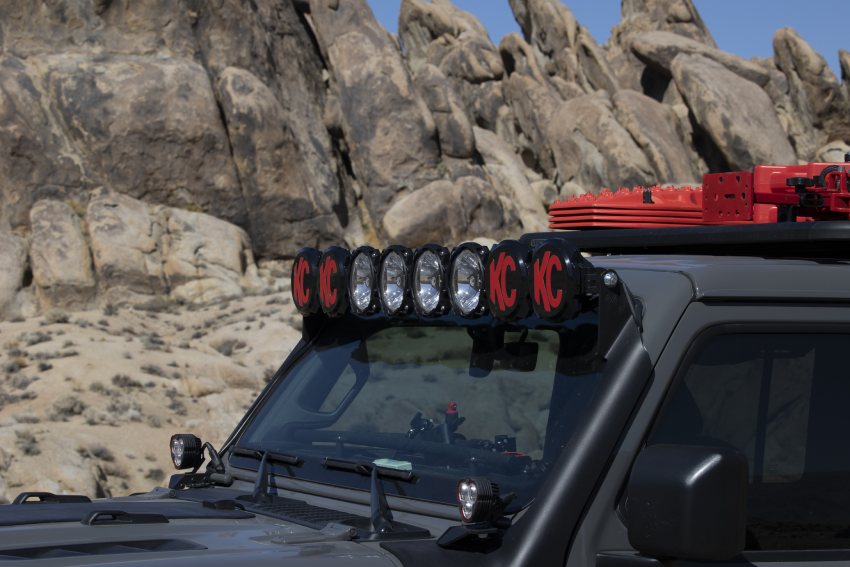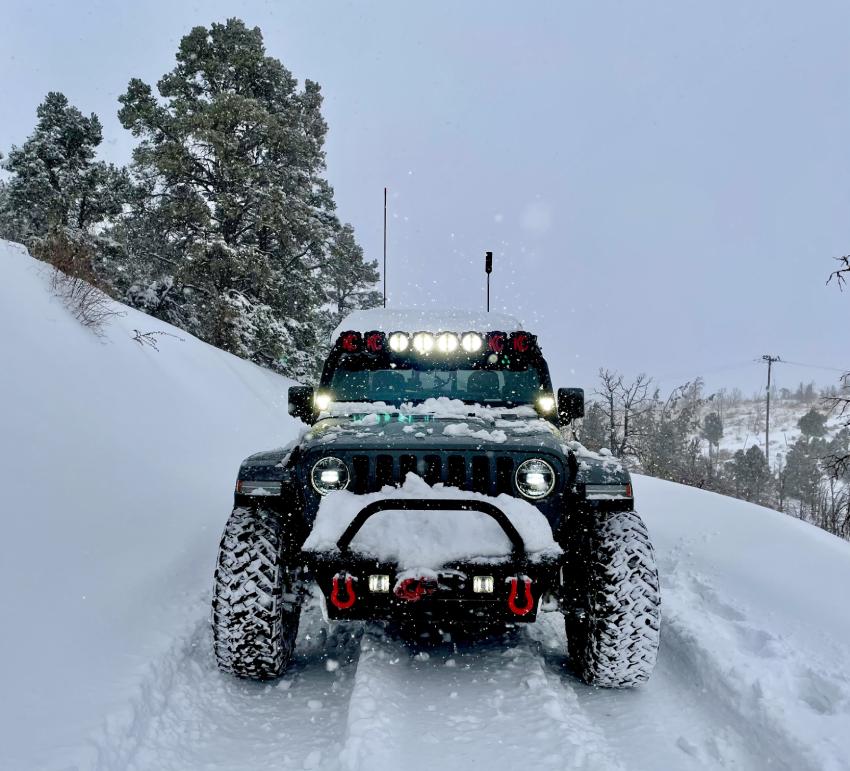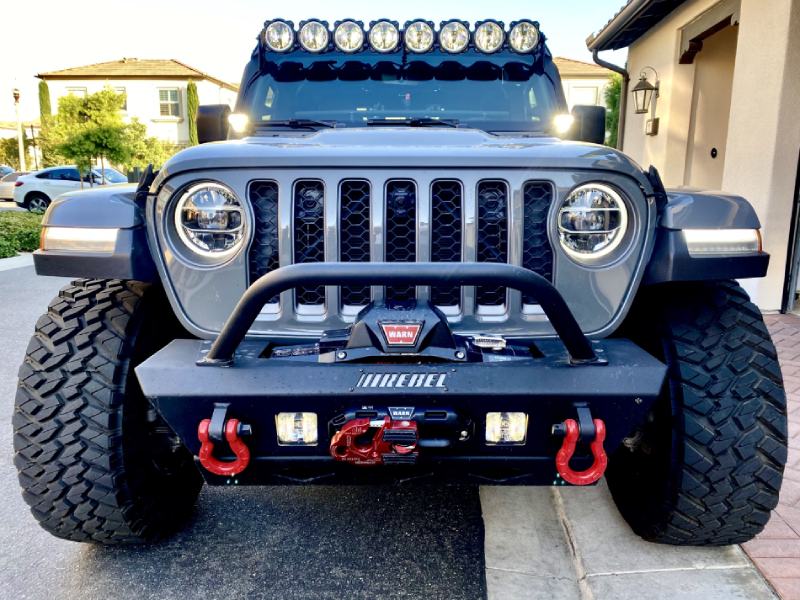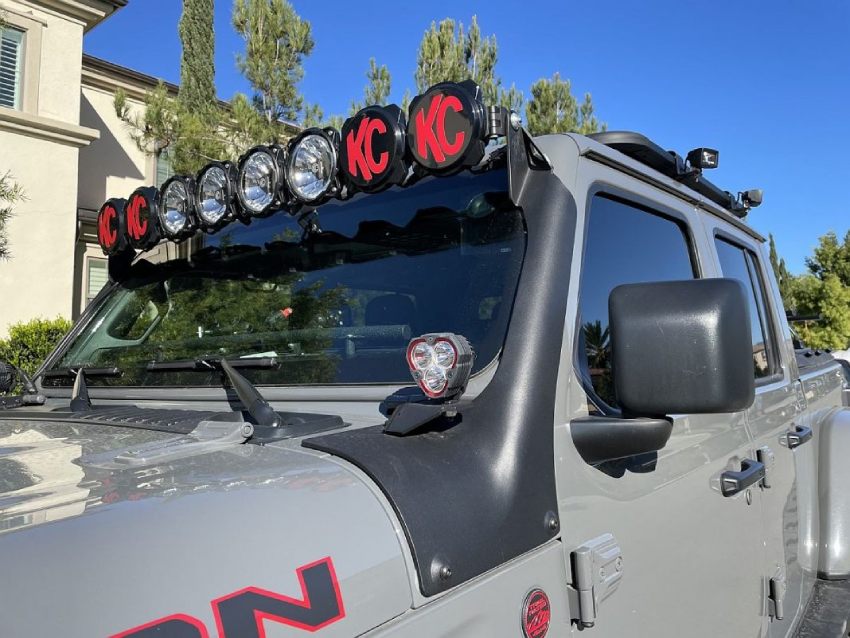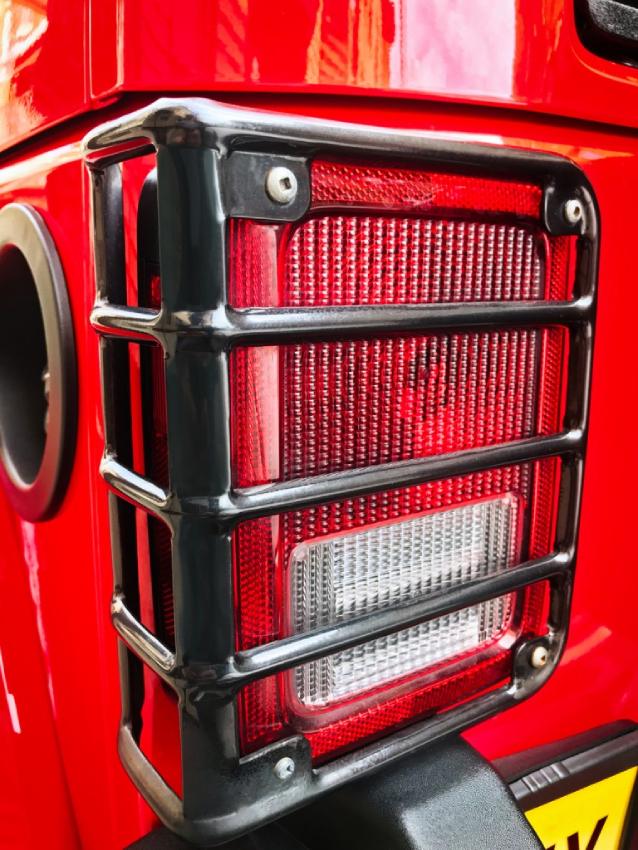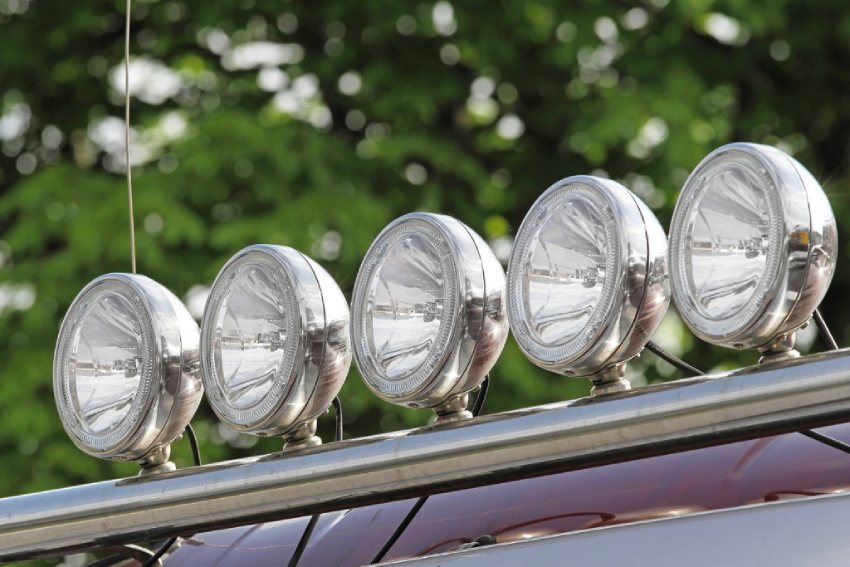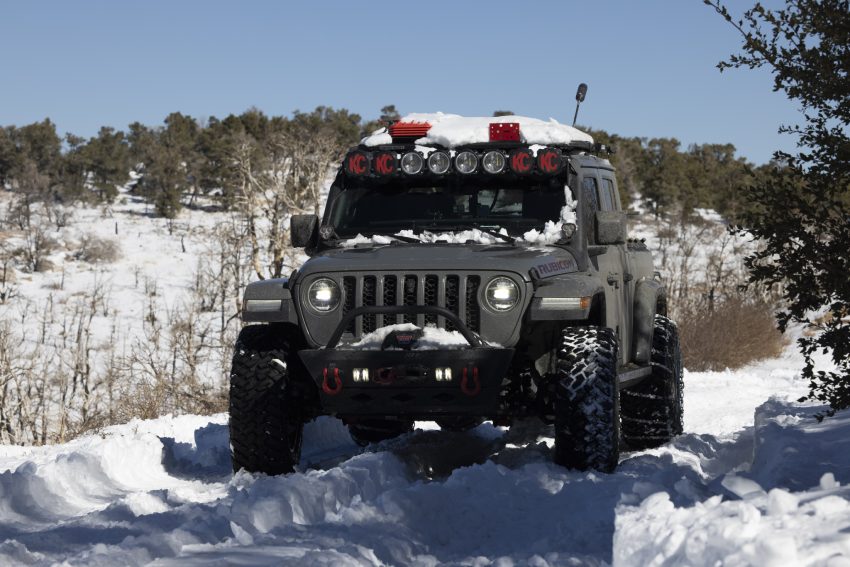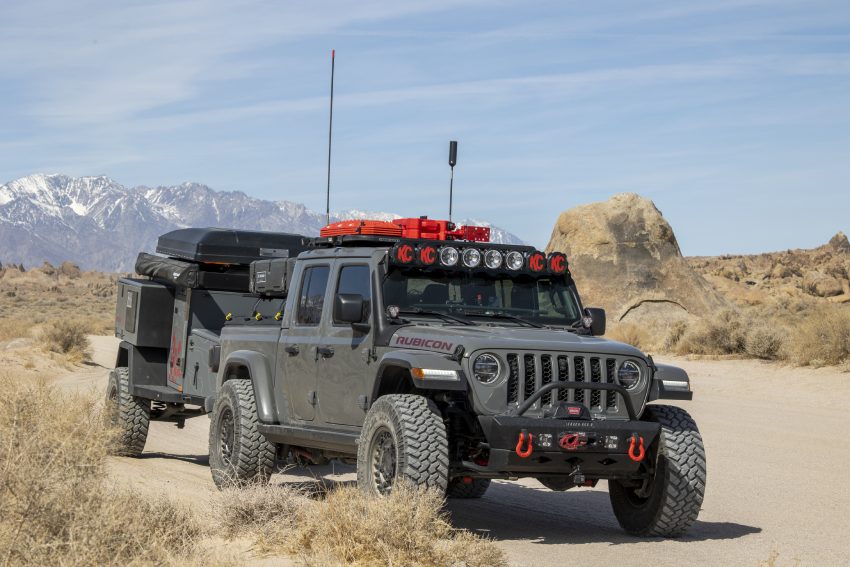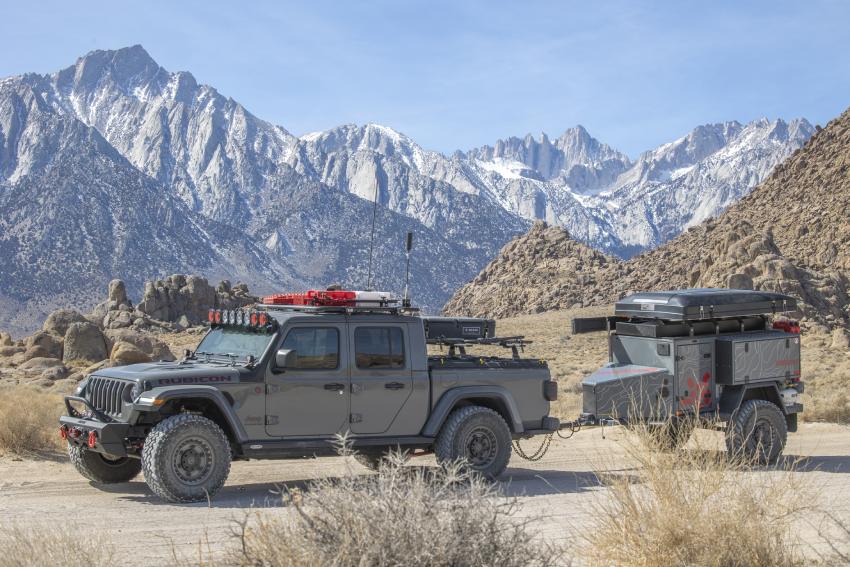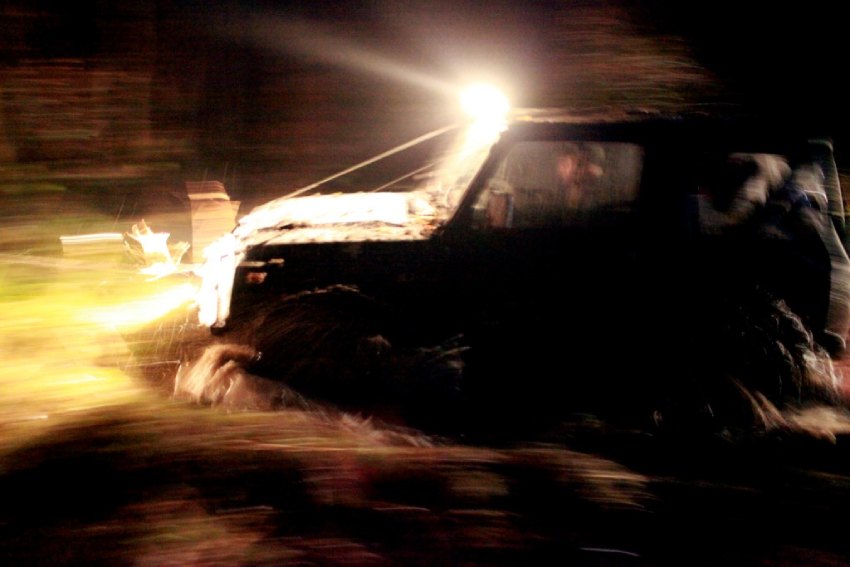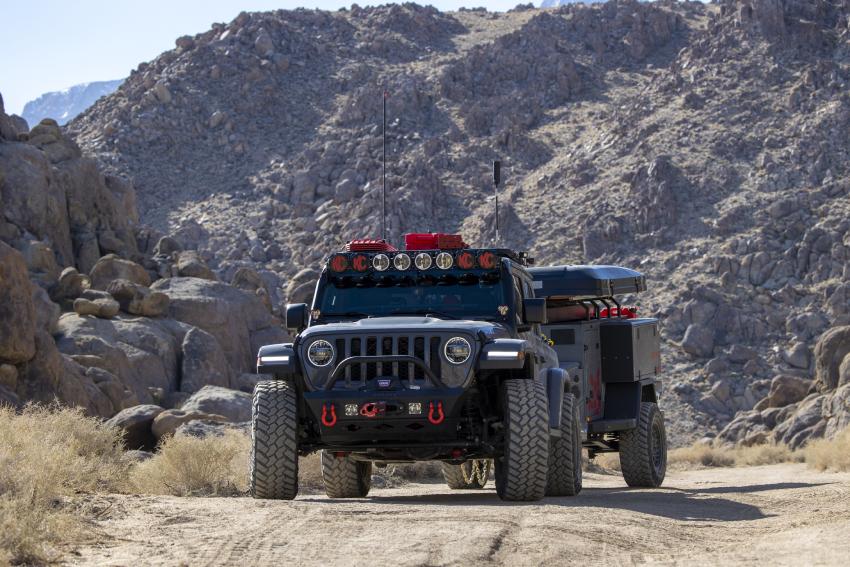Let’s be honest…
There are tons of different types, styles, and brands of 4WD lighting you can buy for your off-roading or overlanding rig. Personally, I use KC Hilites on my truck. More on that later.
But simply adding random lights won’t suffice. You need to take the time to learn about the different types of lights at your disposal so you know what type of 4WD lighting is best for your needs.
With that in mind, I’ve put together this 4WD lighting buyer’s guide to help you out. In it, you’ll find information about popular types of lights, laws governing 4WD lighting, common definitions, and much more. Let’s get to it!
4WD Lighting Definitions
Let’s start things off with a quick overview of some basic 4WD lighting definitions.
Driving Lights
As you probably have guessed, driving lights are used in conjunction with your vehicle’s headlights.
Usually these lights have a beam pattern that goes beyond what your headlights can do (both in terms of distance and width). As a result, driving lights are handy for improving visibility on the sides of the vehicle and further down the road, trail, two-track, etc.
I went with the KC Pro6 Gravity LED lights for the light bar mounted above my windshield. As you can see above, I have eight of them mounted to the bar to give me more than enough light when the situation calls for it.
Like many other KC lights, these bad boys are available as driving lights, spot lights, or wide-40 lights. I use them as driving lights for those dark nights out on the trail.
Get my first impressions of the KC Pro6 Gravity LED lights in this article.
Fog Lights
Fog lights aren’t just beneficial for driving in foggy conditions. Instead, they are designed to improve your ability to see lane markings, the edge of the road or trail, and what’s directly in front of your vehicle.
Fog lights are not designed to be used by themselves. Rather, you should use them along with your vehicle’s headlights when driving in fog, rain, snow, or even dusty conditions.
On my rig, I have two KC Gravity LED G34 lights mounted to my bumper. These lights are available with driving, fog, or wide-40 beams, so you get the flexibility of tailoring the beam pattern to your specific needs.
Spot Lights
Spot lights are used for illumination far down the road. They are a concentrated beam that illuminates – you guessed it – a spot.
If you race, having spot lights are essential as their far-flung beams light up objects far down the road, thus giving you improved reaction time. With more reaction time, you can drive faster.
But if you race, spot lights aren’t the only thing you need. Instead, they should be used together with your vehicle headlights and driving lights for optimal illumination.
I don’t race, but I do have dual KC Flex Era 3 spot beams mounted on the A-pillars of my truck, as shown above.
I got these lights to supplement my headlights and driving lights for night driving on the trail. They offer multiple beam patterns and styles of lights with options for different bezels, optics, and covers, so that flexibility is fantastic.
Flood Lights
Flood lights are just what you need if you need to illuminate the area directly in front of the vehicle. They have a narrower beam than driving lights but they reach further than driving lights. At the same time, flood lights have a wider beam than spot lights, but don’t reach quite as far as spot lights do.
So, flood lights are a good mix of what driving lights and spot lights offer. As such, they are a great option for night-time trail riding.
I personally use four KC C2 LED lights mounted on my roof rack (shown above with the Gravity 6 Light Bar) to give me plenty of illumination on the sides of my truck. I mostly use these as work lights (more on those below) to light up the campsite when we’re setting up after dark, but they could also be used on the trail to help me navigate narrow passages.
Reverse Lights
Photo by gerenme via iStock
The reverse lights on your vehicle have to adhere to certain regulations for minimum and maximum brightness, which are determined by the Department of Transportation.
In normal, everyday driving, the reverse lights on your vehicle are more than adequate. But if you’re in a sticky situation on a trail at night, you might need supplemental lighting to give you a better view of what’s behind you.
In that case, you might consider adding a couple of rear-facing flood lights or work lights to help you out. Adding fog lights to the rear of your vehicle is another option.
4WD Work Lights
Work lights help illuminate the area around your rig – front, back, sides, or all of the above. In some instances, they might have driving-shaped beams, but in others they might have flood-shaped beams (like on my truck). Sometimes they’ll even have a combination of the two.
Work lights are great for all sorts of applications – setting up camp, changing a flat tire, grabbing stuff out of your bed rack, and so forth. And, as noted earlier, they can be used to help you reverse if your reverse lights aren’t cutting it for the task.
Learn More:
Types of 4WD Lighting Sources
4WD lighting comes in three common types of sources – halogen, HID, and LED.
Halogen Lights
Photo by Baloncici via iStock
Halogen lights are the most common type of light source. They are the least expensive to make, their lighting output is good, and the amp draw is low.
Additionally, finding replacement bulbs is easy, and they tend to be quite inexpensive.
HID Lights
HID lights, or High-Intensity Diode lights, are the brightest 4WD lighting available. They are also more efficient than halogens.
If you race, having HID lights is critical as they offer bigger, brighter beams that cast further down the trail. They are more expensive, though, so that’s something to consider.
4WD LED Lights
Over the last few years, LED lights have become very popular. Like HID lights, they are more efficient than halogens. They also come in a wide range of shapes and sizes, so finding a match for your vehicle is easy.
Good LED lights can be expensive, but they can be worth the added expense for the quality of light that you get. Unfortunately, there are many knock-off LED lights out there that are simply not up to snuff in the build quality or light quality department. If you choose to buy LEDs, be sure you investigate the lights before you purchase. Read reviews and check out customer ratings for some insights into the quality of the lights.
You Get What You Pay For With 4WD Lights
Speaking of expense, lighting for your 4WD vehicle is a you-get-what-you-pay-for situation. If you buy cheap lights, you’ll regret it!
Now, there are a lot of great lights out there, plenty of terrible ones, and some really fantastic ones. That’s why I prefer KC Hilites – they are absolutely incredible lights. These guys have been in the business of making high-quality lights since the age of the dinosaurs (well, a really long time, anyway) so they know exactly what they’re doing.
The lights I have on my rig are well-made, reliable, durable, and were a breeze to install as well. That is not something you can say about many of the bargain-basement lights on the market today.
So, when shopping for lights, my advice to folks that ask me about 4WD lighting is to max out your budget. It will pay dividends on the trail for years and years to come because you’ll have quality lighting that gives you reliable service.
In many cases, opting for the cheap solution only gets you poor performance, and then you’ll be out the money for the cheap lights plus the cost of the replacements you eventually have to buy! There’s nothing wrong with being budget-conscious, but in my experience, paying more upfront for a better product will save you money in the long run.
Think About Your Specific Needs for Off-Road Lighting
Photo by mareks7 via iStock
With the definitions and overview of light sources out of the way, the next task is to figure out what your 4WD lighting needs are – you can’t really buy lights for your rig if you don’t know what you need them for!
Do you seldom leave the tarmac? Are you constantly off-roading at night? Do you plan to do overlanding? Do you need lights to illuminate camp?
These are just a few questions to think about when you’re shopping for lighting. Identifying your specific needs and purposes for the lights will help you narrow your search and get the best lights for your situation.
So, if your rig is a pavement princess and never leaves the asphalt, you don’t need to invest in work lights to supplement your reverse lights. On the other hand, if you spend all your time racing at night, getting HID spot lights should be a high priority for you.
Additionally, understanding the types of lights you need will help you focus your budget on necessities and avoid wasting money on lights that serve no purpose for you.
4WD lighting can be expensive, so you definitely want to spend your money wisely!
Placing Your 4WD Lighting
Of course, it isn’t enough to get the right types of 4WD lighting for your needs – you also need to put those lights in the right places.
Again, where you place lights will depend on what you need the lights to do. Work lights might be best installed up high, like on a roof rack. Spot lights might be a good option for the A pillars on your rig. Driving lights would be a good addition to a push bar. You get the point…
Fortunately, there is a wealth of aftermarket lighting accessories that you can buy for your specific vehicle that will help you place your lights in the optimal positions.
Don’t Neglect the Law, Either
Outfitting your rig with a ton of lights to help you in overlanding and off-roading situations is one of the necessary steps you need to take to make your rig (and your driving experience) as safe as possible.
But having all those lights on your vehicle comes with some measure of responsibility. You cannot use these kinds of lights on the freeway. Not only is it a dangerous practice that could blind oncoming drivers, but in many instances, it’s straight-up illegal.
Common sense will go a long way here – if you’re facing oncoming traffic, don’t use non-DOT compliant lights. Plain and simple. But in addition to having some common sense, you also need to check your state and local regulations for the types of lights that you can and cannot use on certain roadways.
With that, you have a quick guide to 4WD lighting. I hope this helps clarify some things for you so you can more confidently and knowledgeably purchase lights for your rig.



